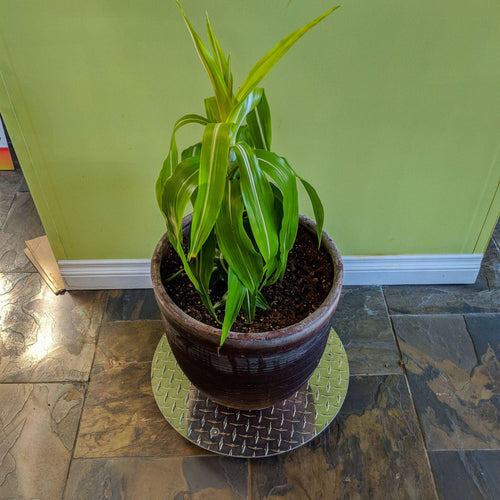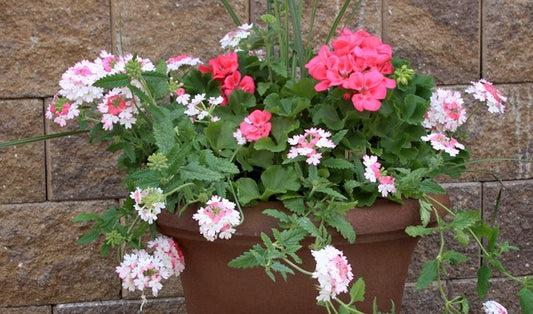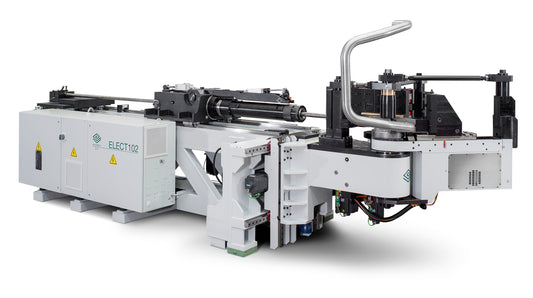Container gardening is popular among homeowners for a variety of reasons, especially because it opens up the possibility of gardening to people who may not want to invest the time or space into traditional gardening. One of the best things about container gardening is that most plants can be grown in containers, including berries, with a little care and ingenuity.
Pros of Growing Berries in Containers
- Only need a small space instead of a yard.
- Container plants are easy to care for.
- Fewer pest problems in containers.
- Easier to maintain proper soil pH, especially important for blueberries.
- Cheaper than buying fruit at the market.
- You are completely aware of any and all fertilizers or other chemicals applied to the plants during the growing season.
Best Berries to Grow in Garden Containers
The best types of berry plants to grow in container gardens are those that have “small fruits”. This doesn’t mean the plants themselves are small but the resulting fruits are smaller in nature. Many people choose to plant strawberries, raspberries, blackberries, blueberries, mulberries, and black currants in their container gardens.
Choosing Garden Containers
Berry plants will grow larger than most of your typical container plants (sans strawberries). To account for this look for containers that are at least 24 inches wide, and fairly deep to account for adequate root growth. Many people choose to use half barrels or 5-gallon buckets to plant their berries in.
Also, make sure the containers have excellent drainage. If your containers don’t have any holes you can drill holes in the bottom using a cordless drill.
Container Garden Growing Medium
Most berries prefer well-drained soil so opt for potting soil or a mix of potting soil and peat, depending on the desired pH. Topsoil or garden soil is heavy and can compact itself in containers making it difficult for roots to access oxygen, water, and nutrients.
Potting soil acts as a reservoir for moisture and nutrients around the roots of the plants, it provides “empty” space for air around the roots to allow them to breathe, and it supports the plants by anchoring the roots. If you start by filling your pots with a poor-quality potting mix, it’s not going to hold moisture and nutrients, and it won’t have the right structure to anchor the roots while letting them get enough oxygen.
Commercial potting soil mixes are a blend of ingredients, typically comprised of peat moss or coconut coir, pine bark, and either perlite or vermiculite. The peat moss and pine bark will provide moisture and nutrient retention with good air space for the root system. Perlite and vermiculite are both extremely light, helping to keep a potting mix from getting too heavy while adding extra pore space for oxygen.
Choosing Berry Plants for Your Container Garden
Look for dwarf varieties of the berries you want to grow if they are available, or varieties developed especially for growing in containers. This will keep plants from getting too large for your space or container.
Match the plants chosen to the climate of your area and the USDA growing zone. The USDA plant hardiness zones are based upon the average temperatures during the growing season and act as a standard to determine which plants can be grown in your area.
It’s also important to determine if your berry plants are self-fruitful or need cross-pollination to set fruit. Self-fruitful or self-pollinating plants bear fruit when pollinated by their own pollen or the pollen of the same type of plant; cross-pollinators need plants of another variety for the fruit to form.
Growing Conditions
To get the best growth from your berries, try to maintain the following growing conditions:
- Sunlight is important for plant growth and fruit development. Place containers in a location that receives a minimum of 6 - 8 hours of full sun daily. Try to avoid the sun in the hottest, most intense part of the day.
- Water plants frequently since containers dry out faster than the ground. Many berry plants prefer morning waterings to allow their foliage to dry off before sunset, minimizing fungal diseases.
- Fertilize plants according to their nutritional needs. Most berry plants benefit from the addition of a slow release fertilizer early in the growing season, and then a second application 6-8 weeks afterward.
- Protect the ripening fruit from birds and other pests by covering plants with bird netting. This specialized fabric netting allows air flow and beneficial insects to access plants but keeps birds and other animal predators from eating the fruit before you can harvest it.
- Prune plants as needed. It’s best to check online, at your local library, or with a local gardening center to determine the appropriate pruning schedule for the type of berry you are growing.
Winter Care
In areas that experience more varied or harsher climates, it is necessary to protect berry plants from the frigid temperatures and conditions of winter. To prevent winter dieoff, move containers to an unheated garage or storage shed to allow plants to go dormant during the cooler, winter months while protected from the extreme conditions. Containers can be placed on custom made shelving, constructed using stain steel shelving brackets, to keep them off the floor and out of the way. When spring rolls around, move them back outside to break dormancy and begin active growth.
Use heavy duty plant caddies to facilitate transport making it easier and putting less strain on your body when dealing with large containers.
Conclusion
Growing berries in container gardens is a great way to reap the harvest of fresh fruit in a small space. Choose small fruit varieties, make sure containers are appropriately sized, and provide the basic conditions mentioned above to embark upon a successful growing venture!





